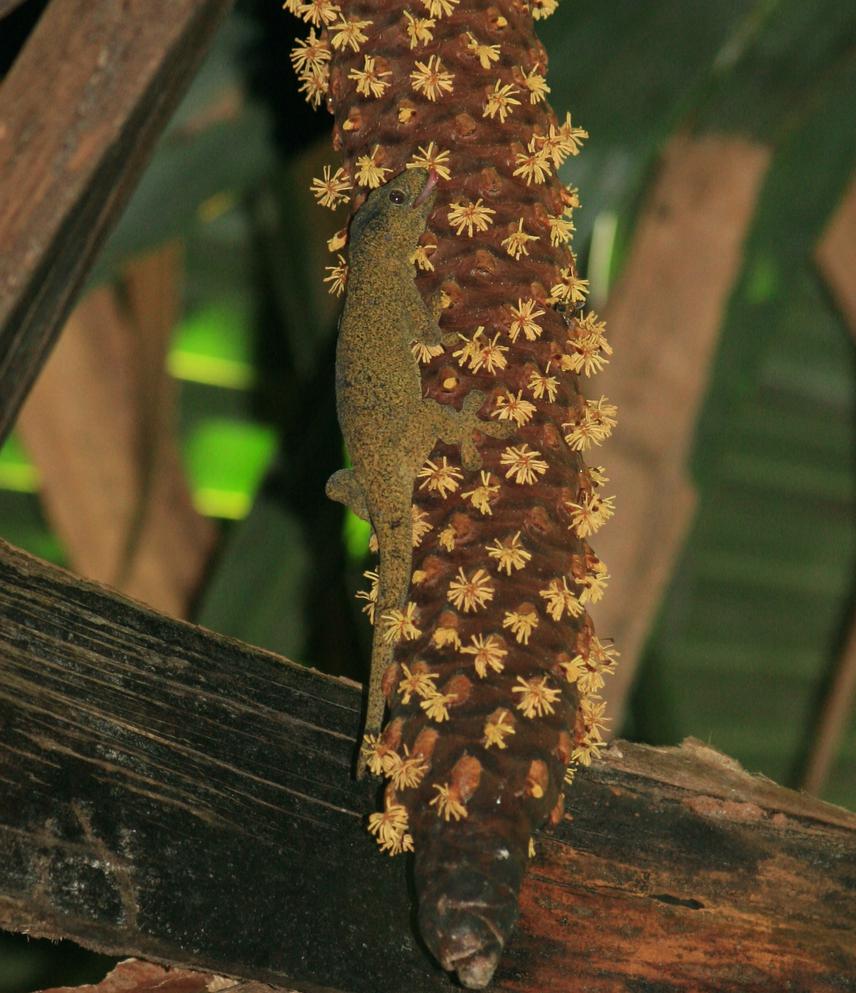Markus A. Roesch
The giant bronze gecko, Ailuronyx trachygaster, is among the world’s largest and rarest geckos and is Seychelles’ most threatened reptile. Despite its size, major knowledge gaps on its ecology remain, strongly impeding conservation measures. Occurring in a small area of coco de mer palm forest on Praslin, this gecko faces many threats, including habitat degradation and poaching.

Giant bronze gecko on coco-de-mer catkin. © Dennis M. Hansen.
Ailuronyx trachygaster inhabits the high canopy of the palm forest (Roberts, 2009) and shows a close foraging link with the coco de mer, Lodoicea maldivica (Mogensen, 2014). Tagg (2016) estimated a population of ~1848 individuals for the 19.5-ha Vallée de Mai, i.e., below the accepted threshold for long-term viability. Finally, Rocha et al. (2017) investigated the genetic diversity across the genus, and found reduced diversity in A. trachygaster, possibly implying reduced reproductive fitness and adaptive potential, which could increase extinction risk. Although these studies have provided some basic information on the species’ ecology, comprehensive and longer-term research into the A. trachygaster’s genetics, population status and dynamics is urgently needed.
This project will substantially build upon and expand knowledge of A. trachygaster. We will improve trend detection by re-evaluating and developing targeted monitoring methods. We will expand population surveys to include sites outside Vallée de Mai to define exact distribution. The project has essential management relevance to inform urgently needed conservation actions for this Critically Endangered species.